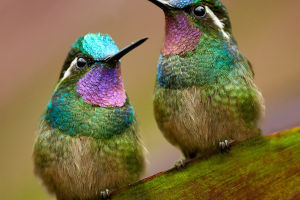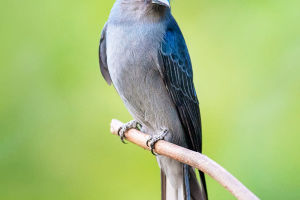Throughout human history, the truth has been as heavy as gold and has always sunk to the bottom of the river, making it difficult to discover, while falsehoods, which are as light as cow dung, float on the surface and spread everywhere. --Francis
Birth, old age, sickness, and death are natural laws of life. It is said that the lighthouse jellyfish, found in the ocean, is one of the only creatures on earth that has the possibility of "immortality." After reaching sexual maturity, the lighthouse jellyfish, under certain conditions, can differentiate, transfer, and return to the young stage. In other words, they can reverse their aging process, re-grow, and continue to exist. But is this really the case?
The lighthouse jellyfish belongs to the Hydrozoa class and has a tiny body size of only about 4-5 mm. They are bell-shaped with a translucent body that reveals their red digestive system. They are named after their lighthouse-like appearance. Most lighthouse jellyfish live in tropical waters and are carnivorous, feeding mainly on plankton and small fish.
In biological theory, the lighthouse jellyfish can live forever, making it the only creature on earth that can live forever in theory. However, this is theoretical immortality and not the type of immortality that people imagine to maintain life.
Lighthouse jellyfish, like other jellyfish, are divided into males and females and reproduce by fertilization. Usually, they live and die traditionally. However, Penn State researcher Maria Pia Miretta said that lighthouse jellyfish do not die as usual, but instead "reverse their body cells to youthfulness." However, this "reverse growth" is conditional and occurs only when they suffer starvation, physical damage, or other crises.
Through the rejuvenation process, one jellyfish becomes hundreds of identical jellyfish. This rebirth process in lighthouse jellyfish is asexual reproduction, which is the biological term for immortality. This ability of the jellyfish to avoid death makes it biologically immortal, according to a researcher at Brookdale University Hospital in New York. This makes the lighthouse jellyfish the only creature that will theoretically live forever as long as it is not eaten or does not die of the disease.
The lighthouse jellyfish can live forever because it has a regeneration gene. If a lighthouse jellyfish is cut open, it can turn into two hydroids within 24 hours and grow tentacles after 72 hours. Even if it is broken, as long as its cells are intact, it can turn into a single hydroid and start life again.
Theoretically, the life of the lighthouse jellyfish has no end. In other words, the lighthouse jellyfish returns to the beginning of life and re-enacts its growth and development before it dies. However, the lighthouse jellyfish is not "immortal" in the true sense of the word. Each metamorphosis of the lighthouse jellyfish is not "immortality and longevity" as people think, but a brand new beginning, no longer the "immortal body" it once was, a process similar to "reincarnation."
It is important to note that the infinite "rejuvenation" of the lighthouse jellyfish is a theoretical situation. In reality, lighthouse jellyfish are more vulnerable and fragile, and they naturally occupy the bottom of the food chain in the ocean, making them an easy target for marine predators. With the destruction of the marine environment and pollution and other natural and man-made disasters, lighthouse jellyfish also find it difficult to survive.


